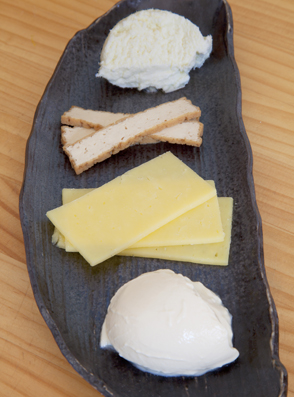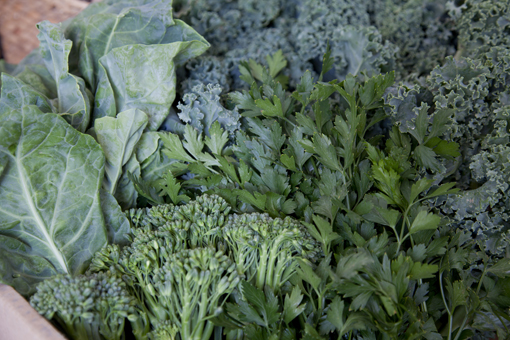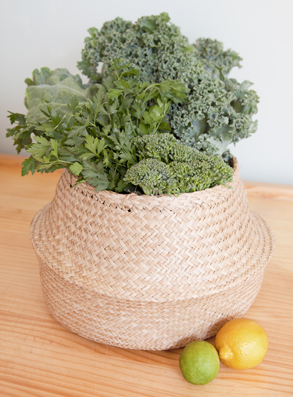Today’s guest post is from Katie Rainbird (AKA Katie180). Katie kindly wrote this post for me a while ago when I suffered a stress fracture in my pelvis. While my injury was running related, Katie’s line from this post
“I think of soft drinks as drinks that make you soft! Soft drinks are loaded with phosphates. Phosphates leach calcium from bone tissue = soft bones.”
went threw mind frequently when I was drinking diet coke before I stopped my habit in June last year.
If you aren’t familiar with Katie’s blog, I can highly recommend checking out these posts:
- Butter versus Margarine… and all that jazz
- Protein content of foods list
- Katie’s series on Coconut Oil – posts one, two and three.
***********
Osteoporosis is a disease of bone tissue whereby density is reduced and architecture is deteriorated, resulting in fragility of bone and thus risk of fracture. Osteoporosis translates as porous (porosis) bone (osteo).
Time takes its toll and eventually all and sundry will wind up a bit rickety, but there are a number of modifiable risk factors that can contribute to the development of osteoporosis:
- Diet
- Lifestyle and environment
- Medications, drugs, alcohol and smoking
- Hormones
Bone mass is rapidly increased during childhood and the late teen years reaching a peak in the late twenties. From then onward, bone mass is reduced at a marginal rate each year.
As such, the building of strong bones via optimal diet and lifestyle largely prevents the onset of osteoporosis; and plays a significant role in managing it once it’s been diagnosed.
My approach to dietary treatment for osteoporosis focuses on an increase in consumption of non-animal foods that are rich in nutrients* required for bone synthesis.
*Listed in detail, to follow.
The reason for this is that animal sources of calcium such as dairy and fish with bones are more likely to promote an acidic state of the blood when they are metabolised; which in turn leads to a toll on the body’s stores of calcium – as calcium is a base that buffers acids.
This doesn’t mean that you ought not to eat dairy or animal products! In moderate portions, they are good sources of nutrients and play their role in a well-rounded diet.
The absorption of calcium is enhanced by the presence of digestive secretions (hydrochloric acid), thus foods such as bitter greens (rocket, radicchio, watercress), lemon and lime juice, and apple cider vinegar taken in water are recommended as digestive tonics.
Almost as important about what you include or increase in your diet, is what you remove or significantly decrease.
And here is where I’m going to say that I think of soft drinks as drinks that make you soft!
Soft drinks are loaded with phosphates. Phosphates leach calcium from bone tissue = soft bones.
Soft drinks are high in sugar. Excess sugar results in deposition of fat into fat cells = soft around the middle.
If you can’t eliminate soft drink from your diet altogether, try the following, see what works for you:
- Instead of drinking straight from a can, pour one 200mL glass and ditch the rest.
- Buy mineral or soda water and mix with fresh lemon or lime, elderflower cordial, lime cordial or bitters.
- When you’re craving a soft drink, have a glass of water first.
- Try day on, day off, this will instantly reduce your consumption of soft drinks by half.
Further, aim to reduce tea and coffee, substituting them at alternate occasions with herbal teas such as:
- Peppermint – aids digestion.
- Lemongrass and ginger – immune booster.
- Dandelion tea – digestive tonic.
- Roobios – rich in antioxidants, lovely with a dash of milk and honey.
- Green tea – rich in antioxidants, contains caffeine but results in a gentle alertness rather than a buzzy stimulant.
Key nutrients involved in the modeling of bone:
| Nutrient | Action | Food Source |
| Calcium | Major component of bone matrixSupplementation reduces bone loss | Almonds, Dark green leafy vegetables: kale, spinach, watercress, broccoli, parsleySwede, Tofu, Fortified soy milk, Tahini, sesame seedsCheese |
| Magnesium | Participates in calcium metabolism, recently emerging studies are linking magnesium deficiency with osteoporosis | Nuts: almonds, cashews, Brazils, Peanuts, PecansWhole grains, Tofu, Dark green leafy veg.Dried figs, dates, apricots |
| Vitamin D | Stimulates the absorption of calcium | Oily fish, Sunflower seedsWhole butter, Eggs, MushroomsSUNLIGHT REQUIRED FOR CONVERSION |
| Phosphorus | Involved in growth and mineralization of bone tissue | Whole grains, Pumpkin seeds (pepitas), Sunflower seeds, Sesame seeds, NutsHard cheese, Soy beans |
| Boron | Improves the development and maintenance of bone tissueActivates Vitamin D | Nuts, Legumes, Apples, Pears, Prunes/dates, Soy milk |
| Silica | Participates in the calcification (hardening) of bone during bone modeling and remodelingContributes structure and integrity to collagen (joining bony parts together) | Alfalfa sprouts, Barley (could sprout this also), Brown riceOats, Root vegetablesWhole grains |
| Manganese | Part of bone tissue | Nuts, Legumes, Coconut flesh, Organ meats, SeedsRoot vegetables |
| Vitamin C | Strength and integrity of connective tissueCalcium is optimally absorbed in the presence of vitamin C | Dark green leafy veg., Parsley, Citrus, BerriesCruciferous veg. (cabbage family)Red, yellow, orange, pink and purple fruit and veg. |
Contingent nutritional therapy:
| Nutrient | Action | Food Source |
| Vitamins B6, B9 and B12 | Key for the conversion of one amino acid into another: a bit science-y here: if methionone doesn’t convert to cysteine a build up of homocysteine can occur; which interferes with the integrity of collagen. Collagen provides structure, stability and strength to bony joints. | Whole-grains, nuts, seeds, eggs. B12 is found bound to animal tissue only: choose lean, organic meat and seafood. |
And remember to keep moving: increases in osteoporotic bone density and strength are positively associated with physical activity, particularly weight-bearing exercise.
Sit down and review your week: allocate 15 minutes of brisk walking or at-home weights and lunges every other day.
Or if your time and budget allows: join a gym or appoint a personal trainer.
Whatever it is that you can do and you are able to accommodate: do it ~ your skeleton at 80 is counting on you today!
Diet and lifestyle for osteoporosis snapshot:
- Increase plant food sources of calcium and magnesium.
- Ensure adequate dietary sources of the B-group vitamins B6, B9 and B12.
- Enhance digestive secretions.
- Engage in regular physical activity.
- Take 15 minutes of sunlight exposure daily.
- Reduce the consumption of soft drinks, animal flesh, dairy, alcohol, coffee and aim to quit smoking cigarettes.
 Katie Rainbird (AKA Katie180) is a Sydney-based Nutritionist who is just as likely to be found jogging as she is baking.
Katie Rainbird (AKA Katie180) is a Sydney-based Nutritionist who is just as likely to be found jogging as she is baking.
She is a mother to two, a keen home cook, prefers to get around in her workout gear and has a major passion for the written word. You can learn more at www.katie180.com.au.
How do you source calcium in your diet?




